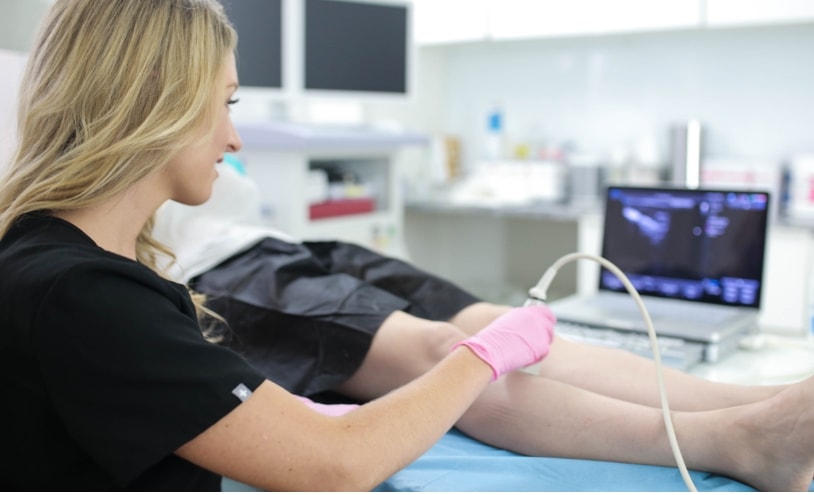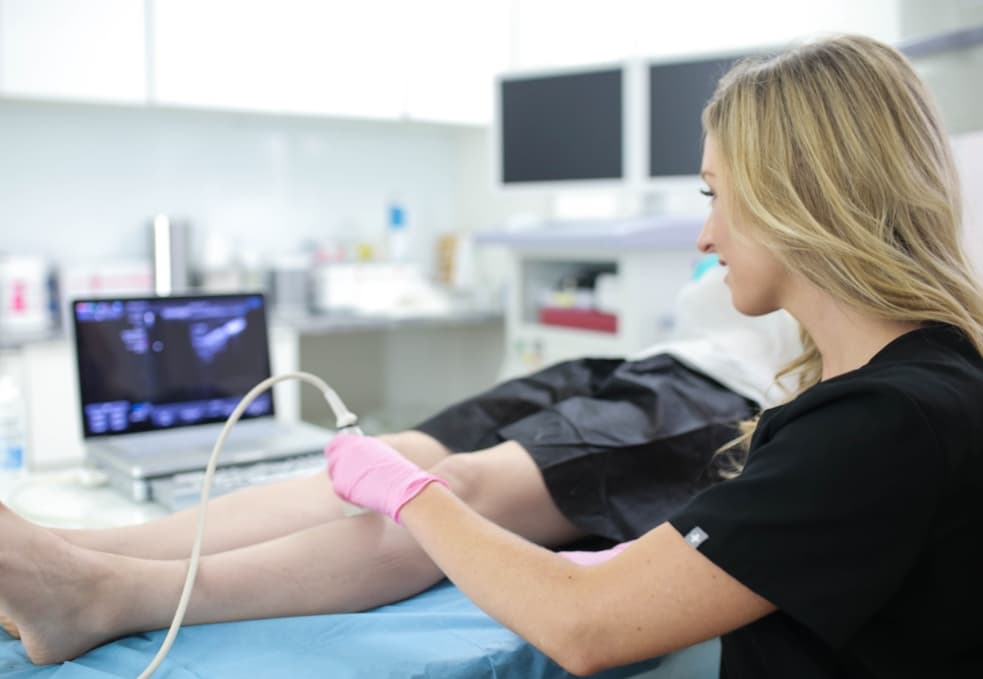Vein issues can be a significant concern for individuals leading active lifestyles. Whether you’re an athlete, a fitness enthusiast, or someone who simply enjoys staying on the move, dealing with vein problems can disrupt your routine and hinder your performance. From varicose veins to deep vein thrombosis (DVT), these conditions can range from mildly discomforting to potentially life-threatening if left untreated.
However, with advancements in medical technology and treatment options, managing vein issues while maintaining an active lifestyle is more feasible than ever before. Long Island Vein Treatment is led by board-certified vein doctors who thoroughly diagnose the root cause of your vein problems and recommend the most effective minimally invasive vein treatments to help you address your vein issues and resume daily activities with minimal downtime.
Long Island Vein Treatment has state-of-the-art offices across Long Island, including West Islip, Jericho, and Hampton Bays. Please schedule an appointment at your nearest medical center for vein treatment in Long Island to explore your vein treatment options. In this comprehensive guide, we’ll explore vein treatments tailored to individuals with active lifestyles, empowering you to take control of your vascular health and continue pursuing your passions.

Types of Vein Issues
Before delving into treatment options, it’s crucial to understand the common vein issues that individuals with active lifestyles may encounter:
- Varicose Veins: Varicose veins are enlarged, twisted veins that typically occur in the legs. They develop when the valves in the veins weaken or become damaged, causing blood to pool and the veins to bulge. Symptoms may include pain, swelling, heaviness, and aching in the legs, especially after physical activity or prolonged periods of standing.
- Spider Veins: Spider veins, also known as telangiectasia, are small, dilated blood vessels that appear close to the surface of the skin. They often resemble spider webs or tree branches and can be red, blue, or purple in color. Spider veins can impact self-confidence, particularly for individuals with active lifestyles who frequently expose their legs during physical activity.
- Deep Vein Thrombosis (DVT): Deep vein thrombosis is a serious condition characterized by the formation of blood clots, or thrombi, within the deep veins of the body, most commonly in the legs. If left untreated, DVT can lead to serious complications such as pulmonary embolism (PE), a potentially life-threatening condition in which the blood clot travels to the lungs.
- Chronic Venous Insufficiency (CVI): Chronic venous insufficiency occurs when the veins in the legs fail to efficiently return blood to the heart. This can result from damage to the valves in the veins, which normally help prevent blood from flowing backward. As a result, blood may pool in the legs, leading to swelling, heaviness, achiness, cramping, and skin changes.
How Vein Disorders Affect People With Active Lifestyles
Vein disorders can have a significant impact on individuals with active lifestyles, potentially disrupting their ability to engage in physical activities and pursue their passions to the fullest. Here are several ways in which vein disorders can affect people with active lifestyles:
- Pain and Discomfort: Varicose veins, spider veins, deep vein thrombosis (DVT), and chronic venous insufficiency (CVI) can cause varying degrees of pain and discomfort in the legs. For individuals who enjoy activities such as running, hiking, or playing sports, this discomfort can limit their ability to perform at their best and may even deter them from participating altogether.
- Swelling and Fatigue: Swelling and fatigue are common symptoms of vein disorders, particularly during or after periods of physical activity. The accumulation of blood in the legs due to impaired venous circulation can lead to swelling, heaviness, and a sensation of tiredness or fatigue, making it challenging to maintain an active lifestyle.
- Reduced Performance: Vein disorders can impair circulation and oxygen delivery to the muscles, resulting in reduced athletic performance and endurance. Athletes and fitness enthusiasts may find that they are unable to achieve their usual speed, strength, or stamina due to the limitations imposed by vein-related symptoms.
- Increased Risk of Injury: Individuals with vein disorders may be at higher risk of injury during physical activity. Varicose veins, for example, can cause changes in gait and balance, increasing the likelihood of trips, falls, and musculoskeletal injuries. Additionally, individuals with DVT may be more susceptible to blood clot formation.
- Psychological Impact: The visible appearance of vein disorders such as varicose veins and spider veins can also have a psychological impact. Concerns about body image and self-confidence may arise, particularly in settings where legs are prominently exposed, such as swimming pools or gym facilities. This can keep you from enjoying your physical activities.
Your Minimally Invasive Vein Treatment Options
Fortunately, several effective vein treatment options are available for individuals with active lifestyles. These minimally invasive vein treatments aim to alleviate symptoms, improve vein function, and enhance overall vascular health. Here are some of the most common treatments:
- Sclerotherapy: Sclerotherapy is a minimally invasive procedure used to treat varicose and spider veins. During the procedure, a sclerosing agent is injected directly into the affected veins, causing them to collapse and eventually fade from view. Sclerotherapy is an outpatient procedure that requires little to no downtime.
- Endovenous Laser Ablation (EVLA): Endovenous laser ablation, also known as endovenous laser therapy (EVLT), is a procedure used to treat varicose veins. During EVLA, a thin laser fiber is inserted into the affected vein, where it delivers laser energy to seal the vein shut. Over time, the closed vein is absorbed by the body, and blood is rerouted through healthier veins. EVLA causes minimal discomfort and involves a quick recovery period.
- Compression Therapy: Compression therapy involves wearing specially designed compression stockings or socks to improve circulation and reduce swelling in the legs. These garments apply gentle pressure to the legs, helping to prevent blood from pooling and reducing the risk of varicose veins and DVT. Compression therapy is particularly beneficial for individuals who spend long hours on their feet or engage in high-impact activities.
Why Minimally Invasive Vein Treatments Are Ideal for Athletes
For athletes and individuals with active lifestyles, maintaining peak physical condition and minimizing downtime are essential. When it comes to treating vein disorders, minimally invasive procedures offer several advantages for athletes:
- Quick Recovery Time: Minimally invasive vein treatments typically require minimal downtime compared to traditional surgical interventions. Athletes can benefit from quicker recovery times, allowing them to return to their training and competitive activities sooner without prolonged disruptions to their routines.
- Outpatient Procedures: Many minimally invasive vein treatments, such as sclerotherapy and endovenous laser ablation (EVLA), are performed on an outpatient basis. This means athletes can undergo treatment without the need for overnight hospital stays, minimizing interference with their training and competition schedules.
- Minimal Scarring: Minimally invasive vein treatments involve small incisions or injections, resulting in minimal scarring compared to traditional surgery. Athletes who rely on their physical appearance, such as swimmers or track and field competitors, can benefit from cosmetic outcomes that preserve their professional image.
- Preservation of Muscle and Tissue: Minimally invasive procedures target the affected veins directly, minimizing trauma to surrounding muscle and tissue. This is particularly advantageous for athletes who depend on optimal muscle function and mobility for their performance, as it reduces the risk of post-treatment discomfort or impairment.
- Customized Treatment Plans: Minimally invasive vein treatments can be tailored to meet the unique needs and goals of each athlete. Our vein doctors can develop personalized treatment plans that address specific vein issues while accommodating your training schedule.
- Effective Symptom Relief: Minimally invasive treatments like sclerotherapy and EVLA are highly effective in relieving symptoms associated with vein disorders. Athletes can experience significant improvements in pain, swelling, and fatigue, allowing them to perform at their best without the limitations imposed by vein-related discomfort.
- Long-Term Results: Minimally invasive vein treatments offer long-term results, with many patients experiencing permanent resolution of their vein issues. This is especially beneficial for athletes who seek sustainable solutions to maintain their vascular health.
Lifestyle Modifications to Improve Symptoms
In addition to medical interventions, making certain lifestyle modifications can help manage vein issues and promote vascular health. These may include:
- Regular exercise: Engaging in low-impact activities such as walking, swimming, or cycling can improve circulation and strengthen the muscles that support vein function.
- Maintaining a healthy weight: Excess weight can put added pressure on the veins, increasing the risk of varicose veins and other vein issues. Adopting a balanced diet and staying within a healthy weight range can reduce this risk.
- Elevating the legs: Taking breaks to elevate the legs above heart level can help alleviate swelling and improve blood flow, especially after periods of prolonged sitting or standing.
- Avoiding tight clothing: Wearing tight clothing, especially around the waist and legs, can restrict blood flow and exacerbate vein issues. Opt for loose-fitting, breathable clothing whenever possible.
Schedule Your Consultation in Long Island
If you’re experiencing vein issues and lead an active lifestyle, it’s essential to consult a qualified board-certified vein doctor who specializes in vascular conditions. Long Island Vein Treatment is led by vein doctors who can conduct a thorough evaluation, including a medical history review and diagnostic tests, to determine the underlying cause of your vein issues and develop a personalized treatment plan tailored to your unique needs and lifestyle.
During your consultation, be sure to discuss your activity level, exercise routine, and any specific concerns or goals you have regarding vein treatment. This information will help your vein doctor recommend the most appropriate interventions to address your symptoms and support your active lifestyle. We only offer the latest and safest minimally invasive vein treatments that involve little to no downtime. Please schedule an appointment at your nearest medical center for vein treatment in Long Island.
